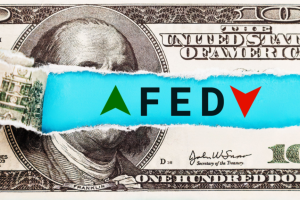
A cautionary tale from the late 1990s … yes, valuation still matters … how Eric Fry is approaching today’s market … your final chance to get Louis Navellier’s AI research
“You’re going to lose half your shareholders.”
That was the warning given to SoGen International Fund manager Jean-Marie Eveillard in the late 1990s.
Eveillard’s conservative portfolio was badly lagging behind the Nasdaq’s returns. Colleagues were noticing and investors were grumbling.
Eveillard’s reply was defiant:
“I’d rather lose half our shareholders than half our shareholders’ money.”
Be careful what you wish for. As the Dot Com bubble reached fever pitch, Eveillard’s shareholders threw in the towel, resulting in the SoGen fund losing nearly two-thirds of its assets.
Of course, that wasn’t the end of the story.
Nearly a decade later, I suspect many of those investors would look back at their decision as one of the stupidest investment moves of their lifetime…
Let’s back up and add in a few details
Eveillard’s tenure at the SoGen International Fund in the 1990s is one of the great contrarian stories of modern investing.
Our macro expert, Eric Fry, retold it in his October issue of Investment Report. We’ll zero in on Eric’s related investment moral and action step momentarily. First, let’s fill in a few holes.
Eveillard was known for his deep value approach, rooted in the philosophies of Benjamin Graham and Warren Buffett. But when the Dot Com bubble swelled in the late 1990s, his commitment to caution set him apart from his peers – and nearly cost him his reputation.
Here’s Eric:
From the beginning of 1997 to the end of 1999, the S&P 500 more than doubled while the SoGen fund advanced just 29%. A large allocation to cash and precious metals weighed down results.
Some folks started to wonder if Eveillard had lost his touch.
Many of his shareholders scorned his “excessive prudence” and started withdrawing from his fund. But Eveillard was resolute. While many investors were piling up cocktail-party tales of investment success, Eveillard was piling up cash.
In 1999, while the NASDAQ gained an eye-popping 86%, Eveillard’s fund returned just 7%.
Frustrated investors bailed, resulting in massive redemptions. Colleagues grew louder in their dismissals of Eveillard’s conservatism. About the experience, he would later say:
I was ridiculed. People told me I didn’t understand the new era.
Eveillard’s moment of vindication came when the Dot Com bubble burst in 2000
In the two years following its peak, the Nasdaq fell 78%. The SoGen International Fund not only avoided the carnage but gained 26%.
But this was just the beginning. Here’s Eric with the longer-term fallout:
In the 10 years from March 31, 2000, to March 31, 2010, the S&P 500 Index produced a negative total return. Over the same time frame, Eveillard’s SoGen International Fund more than tripled!

Instead of spending a decade recovering from severe losses, Eveillard was able to pile up fresh gains.
Eric recounted this story because, today, he’s recommending investors raise some cash by opportunistically selling high-valuation winners
To be clear, Eric isn’t calling for an imminent market crash. But in his issue, he made three points:
- Valuation matters.
- At 26.4 times earnings, today’s P/E ratio is in the highest half of the highest decile since 1953. When stocks have traded at this level, or higher, they have produced a 10-year loss 73% of the time.
- The only way to have cash available to buy stocks when prices are low is to raise cash when stock prices are high.
Back to Eric:
Sometime cash feels like a cop-out – the thing you stash away when you can’t think of anything better to do. But cash can become a superpower when stock prices are falling.
For that reason, I recommend raising cash, here and there, when valuations are lofty as they are today.
I’m not suggesting a complete portfolio liquidation or anything like that; I am merely suggesting that you raise cash opportunistically by selling into strength or trimming positions.
You’ll likely find this hard to do. Not being fully invested in a roaring bull market and watching everyone else rack up the gains can feel awful. As Eveillard said, “It’s warmer inside the herd… it can be very cold outside of it.”
This is why Eric isn’t suggesting a full portfolio liquidation. But his advice makes sense. If we want cash available to “buy low,” after a market corrects, then – assuming you don’t have loads of surplus cash flowing your way – you’ll need to “sell high.”
Eric provides a great way to think about this:
You can start considering your cash as “returns in waiting.”
If you’re an Investment Report subscriber and you haven’t yet read this month’s issue, you don’t want to miss it. Click here to log in.
And if you’d like to learn more about joining Eric in Investment Report, click here.
In the issue, Eric then pivots toward the importance of being selective in which stocks you’re still purchasing in today’s market environment.
And that dovetails into the latest warning from legendary investor Louis Navellier…
Watch out for a “massive” shift in the AI sector
If you’re new to the Digest, Louis is a legendary quant investor. This just means that he bases his market decisions on cold, impartial numbers instead of hunches or guesses.
Louis utilizes high-powered computers that run detailed, hand-designed algorithms to scour the market, searching for the quantitative “fingerprints” of a homerun investment.
These same algorithms led to Louis recommending AI darling Nvidia back in 2019. Well, yesterday, Nvidia hit a new all-time high, resulting in Louis’ subscribers being up 3,196% as I write.
But while Louis still sees gains coming for Nvidia, the broader AI investment universe is shifting today. This has Louis concerned that many investors are missing what’s about to happen:
Right now, most investors are still pouring their money into the “first generation” of AI stocks – like NVIDIA Corporation (NVDA), for example. And while I think NVIDIA will still make investors money, it’s old news at this point.
Instead, the real money will be made in the “second generation” of AI stocks. Simply put, these are the companies that will use generative AI to create profitable companies and reshape existing industries. This will launch the kind of transformational change we only see once every 25 years.
Those who adapt to the coming second wave of AI will take off, leading to years of outperformance… while those that don’t will lag behind – and may eventually go to zero.
If you think the idea of an AI company going to zero is crazy, I’d urge you to remember some of the Dot Com boom’s most beloved names that went belly-up: Pets.com, Webvan, eToys.com, Fooz.com, and Boo.com are just a handful.
I’m told this is the last day we’ll be making Louis’ research on this available. To look into it before we take it down, click here.
Now, putting Eric’s and Louis’ analysis together, it gives us a broad roadmap for today’s market…
Caution, cash, and carefully chosen AI stocks.
Let’s end today with one final piece of evidence supporting this roadmap…
Warren Buffett’s not a bad investor, right?
If you agree, then you’d likely be interested in his favorite way to measure whether the market is attractive or not from a valuation perspective.
This leads us to “the Buffett Indicator,” which the Oracle of Omaha popularized in an interview with Fortune magazine in 2001.
The Buffett Indicator compares the total market capitalization of a country’s stock market to its Gross Domestic Product (GDP). It’s commonly used to assess whether a stock market is overvalued or undervalued relative to the size of the economy.
From Buffett:
[The ratio is] probably the best single measure of where valuations stand at any given moment.
As to how to interpret the Buffett Indicator, in his interview with Fortune, Buffett said:
If the ratio approaches 200%—as it did in 1999 and a part of 2000—you are playing with fire.
So, where is the ratio today?
Here’s Barchart from Tuesday:
Warren Buffett Indicator hits 199%, the highest level in history, surpassing the Dot Com Bubble and the Global Financial Crisis.
Right on cue, the “this time it’s different” crowd roared in protest.
Here’s one such reply from investors in the comments:
It’s flawed if taken by itself. Most of the US companies are now global companies so a fair comparison would be to compare global GDP with global mkt cap.
Perhaps that’s true…
Or perhaps it’s true that this has shades of the attacks that Eveillard experienced as Dot Com stocks roared higher in 1999 and he pointed out concerns.
I was ridiculed. People told me I didn’t understand the new era.
Caution, cash, and carefully chosen AI stocks.
Have a good evening,
Jeff Remsburg





